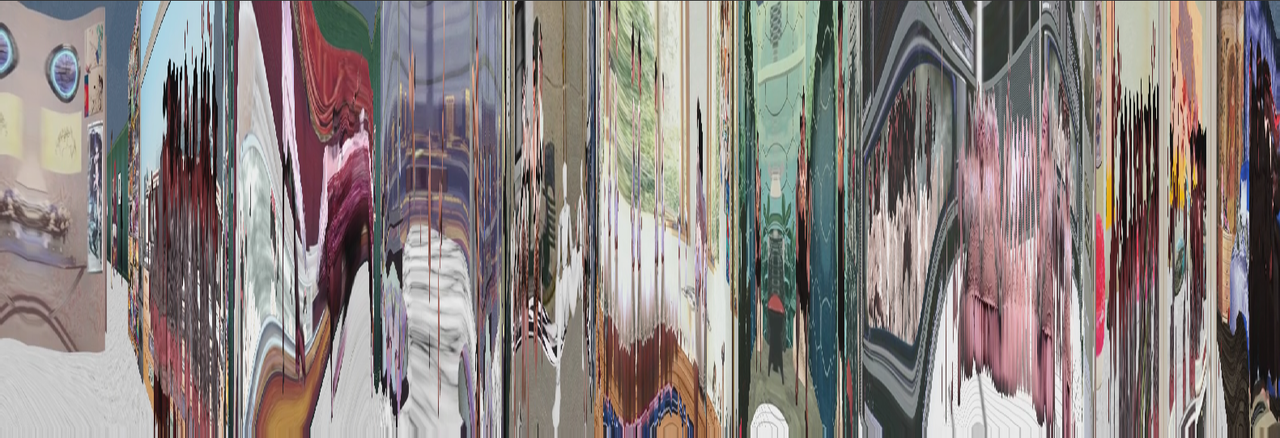
A collection of examples from the Prosthetic Knowledge Tumblr archive on the subject of Slitscanning, a photographic effect that creates distortions and occasionally insightful images based on time.
The slitscan effect has, of-late, had something of a renaissance over the past year thanks to digital technology. Once a time consuming and expensive technique, coders have created their own solutions (either personally or commercially in the mobile app market). For the uninitiated, it has been defined by Golan Levin thus:
Slitscan imaging techniques are used to create static images of time-based phenomena. In traditional film photography, slit scan images are created by exposing film as it slides past a slit-shaped aperture. In the digital realm, thin slices are extracted from a sequence of video frames, and concatenated into a new image.
Below are some examples of creative coding with the slitscan technique:
Volumetric Slitscan Experiments by Memo Akten
The slitscan technique is a well-explored method in photography and video, but this is the first time I have seen it using a Kinect camera feed, where depth plays an additional factor. Two short videos are embedded above, and they are made more fun by the music (dancing to Nina Simone’s “My Baby Just Cares For Me”).
Work-in-progress prototype for an upcoming project involving volumetric slitscanning using kinect (should it be called surface-scanning?). Similar to traditional slitscanning ... but instead of working with 2D images + time, this technique uses spatial + temporal data stored in a 4D Space-Time Continuum, and 3 dimensional temporal gradients (i.e. not just slitscanning on the depth/rgb images, but surface-scanning on the animated 3D point cloud).
Slitscan 3D Test by Ryan Suits
A slitscan experiment in anaglyph vision, worth digging out those red/blue 3D glasses!
slitscanner.js




Bookmarklet can turn HTML5 videos on Youtube and Vimeo into slitscan-like images:
Slitscanner is a little piece of Javascript you can run as a bookmarklet to start, well, slitscanning videos online. This only works in the HTML5 video players so for Vimeo you will need to select “Switch to HTML5 Player” in the lower right on the video pages. For YouTube it’s a little trickier, you can opt into the HTML5 test here, but they will still use the Flash Player for videos with ads.
… Just hit the bookmarklet on any YouTube or Vimeo video page with an HTML5 player, and it will start drawing onto a canvas in the browser. You can modify the speed with the slider (the default value draws the entire video to the width of the browser). You can also download the code and modify it as you wish.
You can find out more and get the bookmarklet here, plus here is a Tumblr blog with some more examples.
2001 A Space Odyssey: Unwrapping The Slitscan Sequence

A visual investigation using code to 'unroll' the famous psychedelic sequence from the film, itself a slitscan:
While watching Kubrick's "2001 A Space Odyssey", I thought it would be fun to write some software to unravel the slit scan artwork in the psychedelic sequences of 2001, to see what they were. The results of this experiment are below..
The technique used to unravel the sequences involved using an SGI's real time video hardware, with a hacked version of 'videoin.c' (from the SGI example programs) to accumulate scanlines from the DVD and concatenate them back into the original artwork. So as the film played, the program ran, unrolling the scanlines in realtime; it was really fun to see the first results..!
You can see more here.
Other links:
An Informal Catalogue of Slit-Scan Video Artworks and Research: An extensive collection of examples of slitscan works.
Vimeo 'slitscan 3d' search: Plenty of examples of contemporary experimentation.

